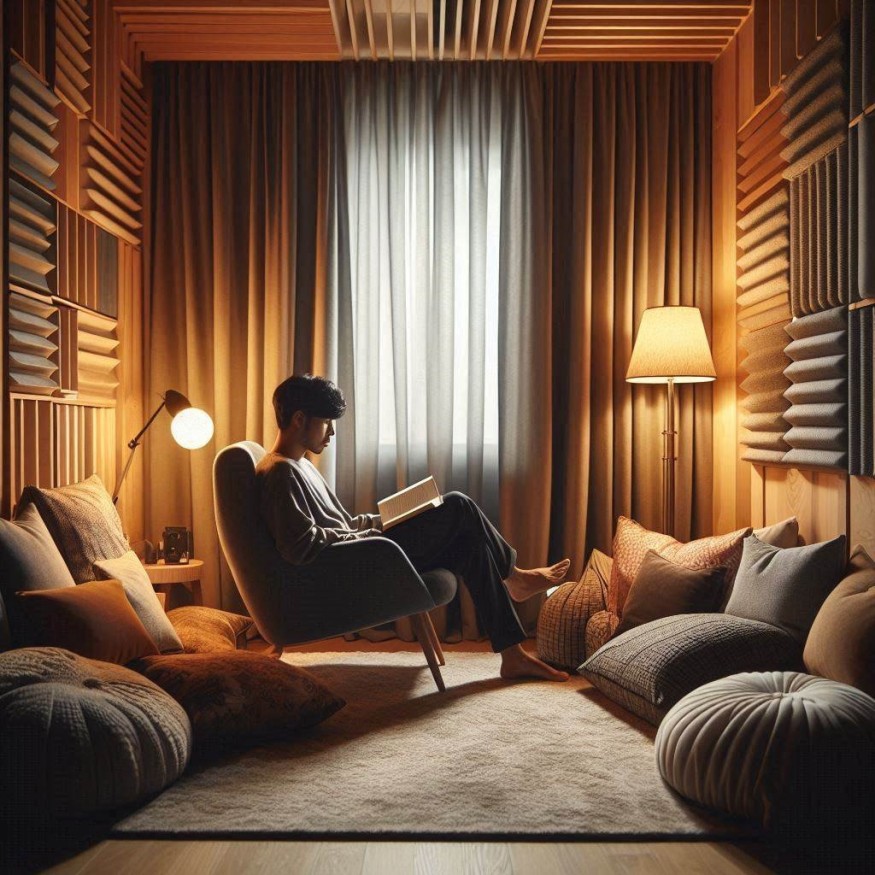Top 5 Essential Tips To Soundproof Your Room for Maximum Tranquility

Soundproofing a room is crucial for maintaining a peaceful and comfortable environment, whether you need to concentrate on work, enjoy relaxation, or reduce noise disturbances from outside. You can significantly enhance the quality of your living or working space by employing effective soundproofing techniques. Here are five essential tips for soundproofing a room effectively:
Seal Gaps and Cracks:
Sound can readily travel through the smallest openings in walls, windows, doors, floors, and electrical outlets. Begin by thoroughly inspecting the room for any gaps or cracks that could serve as entry points for sound. Use caulking or weatherstripping to seal these gaps and prevent sound from leaking in or out. Please pay attention to areas around windows and doors, as they are common culprits for sound transmission.
Use Soundproofing Materials on Walls and Ceilings:
Incorporate sound-absorbing materials to minimize noise transmission within the room. Adding insulation such as fiberglass or acoustic panels to walls, ceilings, and floors can effectively absorb sound waves and reduce reverberation. These materials help to create a quieter environment by absorbing and damping sound energy rather than allowing it to bounce around the room.
Soundproof Doors:
Doors are key areas through which sounds can be allowed into or out of a room. Revamp your doors using the insulation methodology by fixing a weather strip, door bottom, or door gasket. Replacing hollow-core doors with solid-core doors is recommended, as the former is worse concerning sound resistance. Thresholds are also incorporated around the periphery of the door to minimize sound transmittance.
Address Windows:
Windows is another critical area where sound can infiltrate a room. Check if the window seals are intact and replace them if worn out or ineffective. Older windows may benefit from additional soundproofing treatments, such as installing double-glazed windows or using soundproof curtains. These curtains are made from thick, dense materials designed to effectively absorb and block external noise.
Floor Treatments:
Furniture, such as chairs or tables, placed in the room should not be made of materials like tiles or hardwood, which tend to vibrate and create loud noises. To avoid this, lay an area rug, carpet, or mat on any hard floor type so that sound will not reverberate throughout a room or household. These soft materials also help lessen sound vibrations and hence bring about a more silent environment.
Hence, by employing the measures mentioned above, you can reduce the noise levels of the room you are in and make the atmosphere more pleasant for dwelling or work. Soundproofing can significantly enhance your quality of life if you're facing disturbing noise, such as neighbors' or traffic noise, or need a quiet environment for your work, studying, or any other activities. It is essential to consider that soundproofing is a complex process of designing the optimal solution for the particular source of sound and building structures and using multiple approaches to achieve the desirable level of noise isolation to provide the needed comfort while studying, working, or sleeping.
Related Article : Top 10 Must-Try Interior Paint Colors for Your Home
From Digital Models to 3D-Printed Homes: Jaspreet Kaur Lall Explains How the Innovation Changes the Construction Industry

Future Belongs to Green Construction: Sampath Kumar Paspunoori Explains One of the Key Trends in the Construction Industry

Kamala Harris' Campaign Ad Uses Iconic Visuals from Carrie Mae Weems to Connect with Voters

Historic Ancient Roman Ruins in Baalbek Remain Strong After Israeli Air Strikes; Locals Seek Cultural Protection

4 Ways to Honor Departed Loved Ones in Your Home Design











